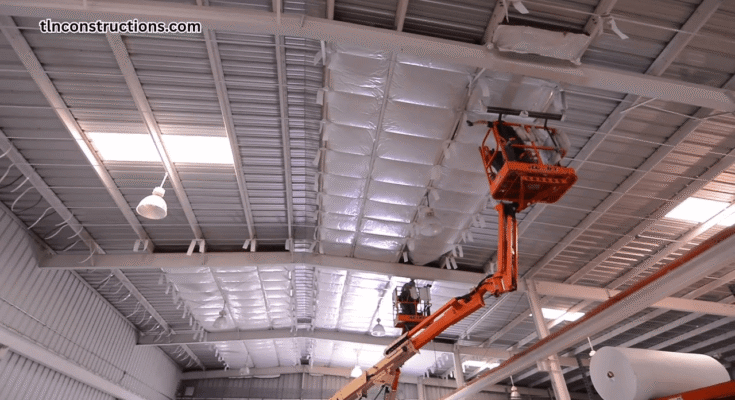Insulating an existing metal building is a smart investment that improves energy efficiency, prevents condensation, reduces noise, and enhances comfort. Whether the structure serves as a workshop, storage facility, or commercial space, proper insulation helps regulate interior temperatures and lowers heating and cooling costs. The process involves selecting the right insulation type, preparing the building, and installing the material effectively to maximize performance.
Choosing the Right Insulation Type
One of the most common and cost-effective methods is using faced fiberglass batt insulation. This material comes in rolls with a vapor barrier facing, typically foil or kraft paper, which helps prevent moisture buildup inside the walls and roof. Fiberglass batts are installed between the framing members—such as purlins and girts—and are ideal for DIY projects due to their ease of handling. For better thermal performance, a two-layer “sag and bag” system can be used, with an unfaced layer placed first, followed by a faced layer draped between the framing to minimize gaps and thermal bridging.
Reflective foil insulation, also known as radiant barrier insulation, is another popular option, especially in hot climates. Made of layers of metalized foil with a polyethylene bubble core, it reflects up to 96% of radiant heat, keeping interiors cooler during summer months. This type of insulation is lightweight and can be installed using a clip-and-pin system attached to roof purlins, making it ideal for retrofitting without significant structural changes. It can also be combined with mass insulation, such as fiberglass, for improved year-round performance.
Installation Methods and Best Practices
For higher thermal resistance, rigid foam board insulation offers excellent R-values and moisture resistance. It is installed on the interior surface of the building and must be sealed at the edges to prevent air leakage. While more expensive and labor-intensive, rigid boards reduce thermal bridging and add structural rigidity. Similarly, spray foam insulation provides a seamless, airtight seal and is highly effective at preventing condensation. Closed-cell spray foam, in particular, offers high R-values and structural benefits but requires professional installation due to its chemical application process.
Another advanced option is insulated metal panels (IMPs), which replace existing metal siding or roofing with pre-insulated panels. These panels consist of a rigid foam core sandwiched between two metal sheets, providing continuous insulation and a finished appearance. While IMPs are the most expensive retrofit solution, they offer superior durability, energy efficiency, and aesthetic appeal, making them ideal for commercial upgrades.
Sealing and Moisture Control
Proper installation is critical. All insulation types require attention to sealing gaps, especially around doors, windows, and utility penetrations. Using butyl tape, caulk, and vapor barriers ensures a tight envelope. Additionally, maintaining proper ventilation in roof spaces prevents moisture accumulation and extends the building’s lifespan. Condensation is a common issue in uninsulated metal buildings, so installing a vapor barrier on the warm side of the insulation is essential to prevent moisture from reaching cold metal surfaces.
Professional Retrofit Solutions
For those seeking expert solutions, CMI’s metal building retrofit insulation solutions offer high-performance faced fiberglass and custom systems tailored to climate and usage needs. With decades of experience, CMI provides products that meet energy codes and deliver long-term value. By choosing the proper insulation method and ensuring correct installation, existing metal buildings can be transformed into efficient, comfortable, and durable spaces.
Insulating an existing metal building is more than just a comfort upgrade—it’s a strategic investment in energy efficiency, structural longevity, and indoor environmental quality. By reducing heat transfer, minimizing condensation, and improving thermal performance, proper insulation can significantly lower heating and cooling costs while protecting the building’s integrity over time. Whether using faced fiberglass, reflective foil, rigid boards, or professional systems, the long-term benefits far outweigh the initial effort and expense. With careful planning, attention to vapor barriers, and proper sealing, any metal structure can be transformed into a durable, energy-smart space ready for years of reliable use.
